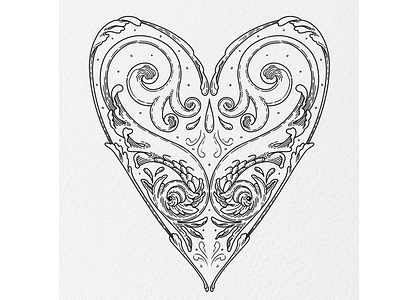Dolphin heart
A HANDBOOK of ORNAMENT BY MAYER . P86 :
"The Dolphin (Dclpliinus delphis, French, dauphin) has enjoyed an unusual share of attention. This sea mammal, which has some- times been erroneously classed among the fishes, lives in the seas of the northern hemisphere, swarms round ships, swims in shoals, and is fond of sport. In ancient times the Dolphin enjoyed, and enjoys even now in some parts, a kind of veneration which protects him from persecution. We meet him occasionally on Antique coins, on Graeco-italic terracottas, on Pompeian mural paintings, on furniture and utensils, and in the architecture of the Greeks and Romans.
Guigo IV of Viennois (1140) took to himself the title of "Dauphin", and the Dolphin as crest. One of his successors, Humbert II, surrendered the Dauphiny in 1349 to Charles of Valois, in exchange for a legacy and on the condition that the heir to the throne should always bear the title "Dauphin"; which condition was faithfully kept. This is the explanation of, the frequent appearance of the Dolphin in French decoration; but its frequent appearance in Italian decoration, is due to its artistic capabilities. The Dolphin is often used in pilasters, panels, in intarsias, in ceilings and mural paintings, in enamel, in niello work, and in typographical ornaments. In modern styles the Dolphin often masks the spouts of fountains. In symbolic representations he is the companion of Nymphs, Nereids, and Tritons, and of Arion, Aphrodite, and Neptune, with whose trident he is often combined in ornament."
